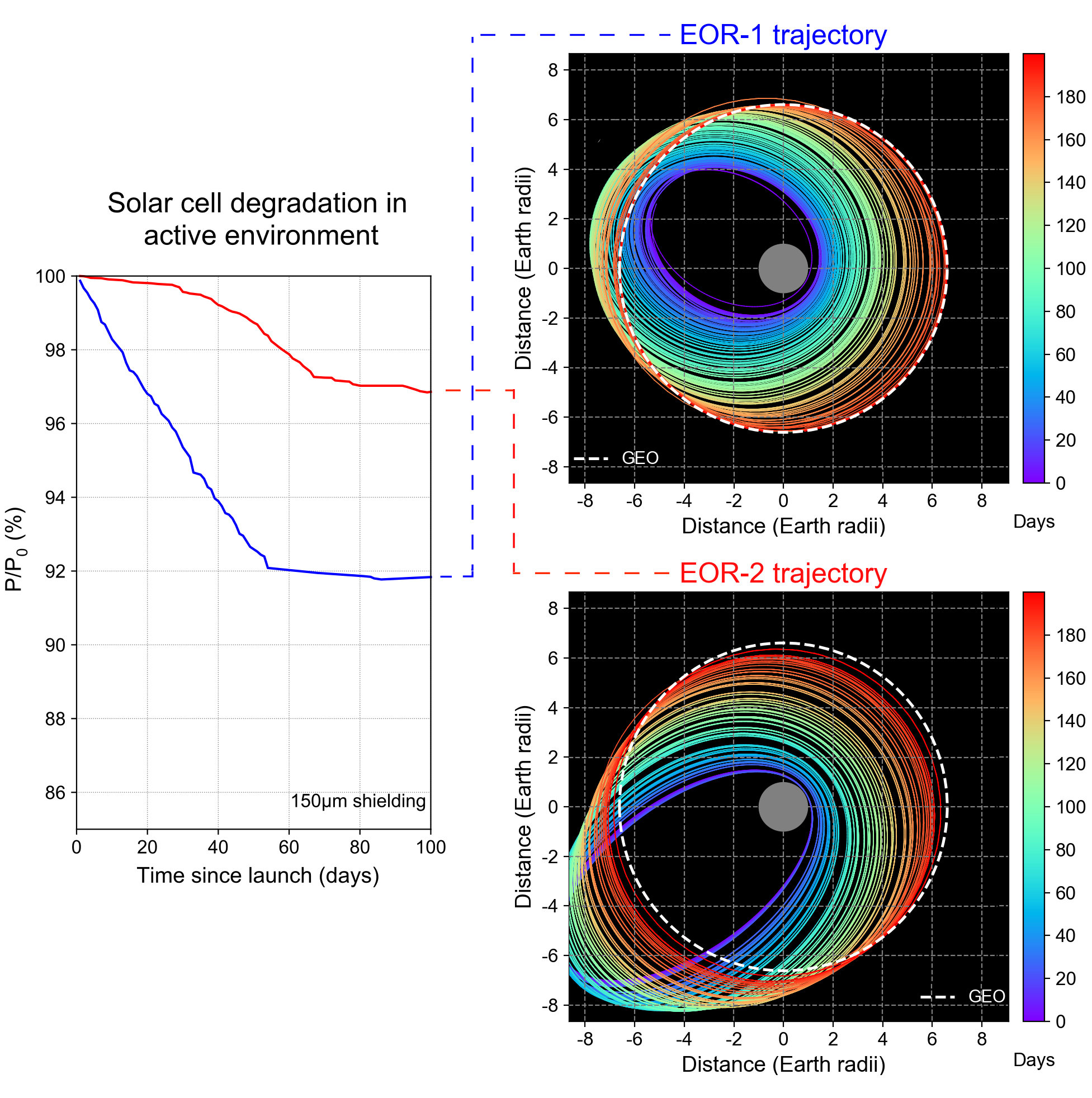MIST
Magnetosphere, Ionosphere and Solar-Terrestrial
The Impact of Radiation Belt Enhancements on Electric Orbit Raising
By Alexander Lozinski (British Antarctic Survey)
Electric orbit raising is a method of getting satellites into geostationary orbit (GEO) using low-thrust electric propulsion. A satellite intended for GEO is first placed into elliptical geostationary transfer orbit after separating from the launch vehicle. Following this, maneuvers are performed to raise the satellite to GEO. In conventional launches, chemical propulsion is used and this process requires a few days. With electrical thrusters, orbit raising can be performed more efficiently but requires a longer period (around 200 days) due to the lower thrust.
This method of raising satellites was introduced commercially in 2014 with the launch of the first all-electric satellites. Although the lower wet mass due to lack of chemical propellant reduces launch costs, the longer time required for the satellite to reach GEO leaves it exposed to irradiation from trapped protons of the Van Allen belts. This can cause degradation to solar cells via non-ionising displacement collisions.
Sustained enhancements in trapped proton flux can occur via trapping of solar energetic particles following a large geomagnetic disturbance. In this work, the solar cell degradation through time for a variety of real electric orbit raising scenarios was calculated in both a quiet and active environment, based on measurements taken by CRRES before/after the March 1991 storm. The trajectories of two previously launched satellites (EOR-1 and EOR-2) that underwent electric orbit raising is shown in the figure. The figure also shows the calculated remaining output power of the solar cell, P/P0, through time for both trajectories in an active environment. Reductions in P/P0 represent degradation to the solar cells.
A key finding is a large (up to 5%) increase in P/P0 degradation that occurs when electric orbit raising is performed in an enhanced radiation belt environment. However, the figure also demonstrates that some orbits are more at risk than others. Orbits with a higher initial apogee (e.g. EOR-2, red line) spend less time in regions of high proton flux, and experience less degradation. The work highlights the significant impacts of an enhanced environment on solar cell degradation, and identifies how this degradation can in part be mitigated with an appropriate choice of orbit and shielding.
For more information, please see the paper:
Lozinski, A. R., Horne, R. B., Glauert, S. A., Del Zanna, G., Heynderickx, D., & Evans, H. D. R. ( 2019). Solar cell degradation due to proton belt enhancements during electric orbit raising to GEO. Space Weather, 17. https://doi.org/10.1029/2019SW002213

Figure caption: The left panel shows the remaining power, P/P0, as a function of time for two satellites. The right panels show trajectories of the two satellites over the first 200 mission days.